Prospective Evaluation of Geothermal Resources in the Shangqiu Uplift of the Southern North China Basin with Magnetotelluric Detection
Abstract
:1. Introduction
2. Geological Backgrounds
3. Data Collecting, Processing, Analysis, and Inversion
3.1. Colleting and Processing
3.2. Dimensionality and Strike Direction
3.3. Two- and Three-Dimensional Inversions
4. Features of the Resistivity Models
5. Prospective Evaluations of Geothermal Resources
6. Conclusions
- (1)
- According to the large difference in electrical structure on both sides of the fault zone, the locations of two large-scale boundary faults (the Jiaozuo-Shangqiu (F1) and the Suixian faults (F5)) and three small-scale faults in the Shangqiu Uplift (the Southern Shangqiu fault (F2), the Luhe fault (F3), and the Ningling fault (F4)) are proposed.
- (2)
- Based on the results of MT detection, the basement-rock geological map of the Shangqiu Uplift is constructed, with 100 Ωm as the boundary. Then, according to the good correspondence between the high-resistivity anomaly formed by the deep-basement uplift and the high-value area of the regional geothermal field, two prospective geothermal anomaly areas are proposed.
- (3)
- Drilling results confirm the reliability of our research.
Author Contributions
Funding
Institutional Review Board Statement
Informed Consent Statement
Data Availability Statement
Acknowledgments
Conflicts of Interest
References
- Unsworth, M.J.; Jones, A.G.; Wei, W.; Marquis, G.; Gokarn, S.G.; Spratt, J.E. Crustal rheology of the Himalaya and Southern Tibet inferred from magnetotelluric data. Nature 2005, 438, 78–81. [Google Scholar] [CrossRef] [PubMed]
- Flóvenz, Ó.G.; Georgsson, L.S.; Árnason, K. Resistivity structure of the upper crust in Iceland. J. Geophys. Res. Solid Earth 1985, 90, 10136–10150. [Google Scholar] [CrossRef]
- Singh, S.; Drolia, R.; Sharma, S.; Gupta, M. Application of resistivity surveying to geothermal exploration in the Puga Valley, India. Geoexploration 1983, 21, 1–11. [Google Scholar] [CrossRef]
- Cagniard, L. Basic theory of the magneto-telluric method of geophysical prospecting. Geophysics 1953, 18, 605–635. [Google Scholar] [CrossRef]
- Zhang, F.; Jia, Z.; Qian, H.; Jin, B. Hydraulic connection of different geothermal reserviors near the urban area of Tianjin city. Contrib. Geol. Miner. Resour. Res. 2015, 30, 448–455. [Google Scholar]
- Yang, Y.-J.; Pang, H.; Jin, B.-Z.; Liu, J.L.; Qian, H.-Q.; Liu, F. Discussion on the geological tectonic setting and geothermal origin in Zhouliangzhuang area of Tianjin. Glob. Geol. 2010, 29, 646–655. [Google Scholar]
- Xu, B.W.; Liu, Z.L.; Ye, G.F.; Shi, F.; Zhu, H.L.; Zhang, M.; Wang, X.Y. Evaluation and analysis of geothermal resources in Ninghe uplift—Evidence from magnetotelluric method. Prog. Geophys. 2018, 33, 2278–2284. [Google Scholar]
- Li, X.; Nie, R.; Wang, L. Application effects of magnetotellurics sounding for exploration geothermal resource in Tianjin. Geol. Surv. Res. 2010, 33, 76–80. [Google Scholar]
- Wang, Q.; Zhao, Z.P.; Yin, B.X.; Hu, F.S. The application of magnetotelluric sounding (MT) method to deep geothermal investigation in plain. Chin. J. Eng. Geophys. 2016, 6, 782–787. [Google Scholar]
- Zhao, J.L.; Chen, T.Z.; Zhang, J. The application of the MT method to the investigation of geothermal resources in Kaifeng depression. Geophys. Geochem. Explor. 2010, 34, 163–166. [Google Scholar]
- Xu, H.L.; Zhao, Z.; Yang, Y.; Tang, Z. Structural pattern and structural style of the Southern North China Basin. Acta Geosicientia Sin. 2003, 24, 27–34. [Google Scholar]
- Sun, Z. Tectonic evolution and petroleum exploration prospective of Taikang uplift. Pet. Explor. Dev. 1996, 23, 6–10. [Google Scholar]
- Xu, H.L.; Zhao, Z.; Lu, F.L.; Yang, Y.; Tang, Z.; Sun, G.; Xu, Y. Tectonic evolution of the Nanhuabei area and analysis about its petroleum potential. Geotecton. Metallog. 2004, 28, 450–463. [Google Scholar]
- Li, W. Effects of igneous intrusions on texture and quality of coal seam in eastern Henan Province. Coal. Geol. Explor. 2014, 42, 8–13. [Google Scholar]
- Li, W.; Xia, B.; Lu, W. Geophysical characteristics and Coal-Searching prospects in east henan area. Geophys. Geochem. Explor. 2004, 28, 26–31. [Google Scholar]
- Liu, G.; Zhang, T. 2D Seismic to Coal Prospecting in the Western Parts of Sui County. Miner. Resour. Geol. 2013, 27, 342–346. [Google Scholar]
- Yang, M.H.; Wang, S.M.; Zheng, X.F.; Wang, J.X.; Bai, H.; Zeng, P. Aeromagnetic anomalies characteristics and tectonic subareas of southern North China Craton and adjacent regions. Geol. Rev. 2009, 55, 862–872. [Google Scholar]
- Zhao, D.L.; Zhao, X.J.; Zheng, L.; Yu, Z.S. Tectonic evolution and coal-searching prospect of tongxu uplift. Geol. Resour. 2008, 17, 132–134. [Google Scholar]
- Gamble, T.D.; Goubau, W.M.; Clarke, J. Magnetotellurics with a remote magnetic reference. Geophysics 1979, 44, 53–68. [Google Scholar] [CrossRef] [Green Version]
- Egbert, G.; Booker, J.R. Robust estimation of geomagnetic transfer functions. Geophys. J. Int. 1986, 87, 173–194. [Google Scholar] [CrossRef] [Green Version]
- Groom, R.W.; Bailey, R.C. Decomposition of magnetotelluric impedance tensors in the presence of local three-dimensional galvanic distortion. J. Geophys. Res. Earth Surf. 1989, 94, 1913–1925. [Google Scholar] [CrossRef] [Green Version]
- Rodi, W.; Mackie, R.L. Nonlinear conjugate gradients algorithm for 2-D magnetotelluric inversion. Geophysics 2001, 66, 174–187. [Google Scholar] [CrossRef]
- Farquharson, C.G.; Oldenburg, D.W. A comparison of automatic techniques for estimating the regularization parameter in non-linear inverse problems. Geophys. J. Int. 2004, 156, 411–425. [Google Scholar] [CrossRef] [Green Version]
- Hansen, P.C. Analysis of discrete ill-posed problems by means of the L-curve. SIAM Rev. 1992, 34, 561–580. [Google Scholar] [CrossRef]
- Kelbert, A.; Meqbel, N.; Egbert, G.; Tandon, K. ModEM: A modular system for inversion of electromagnetic geophysical data. Comput. Geosci. 2014, 66, 40–53. [Google Scholar] [CrossRef]
- Tietze, K.; Ritter, O. Resolution of 3D Elongated Deep Conductive Bodies Embedded in a 2D Background Conductivity Structure by 3D and 2D Magnetotelluric Inversion. In 24. Schmucker-Weidelt-Kolloquium für Elektromagnetische Tiefenforschung. 2011. Available online: https://gfzpublic.gfz-potsdam.de/pubman/faces/ViewItemFullPage.jsp?itemId=item_65381_3 (accessed on 12 April 2022).
- Chen, M. Geothermics of North China; Science Press: Beijing, China, 1988. [Google Scholar]
- Yuan, L. Discussion on the characteristics of geothermal field in eastern Henan. Geol. Henan 1990, 8, 1–3. [Google Scholar]
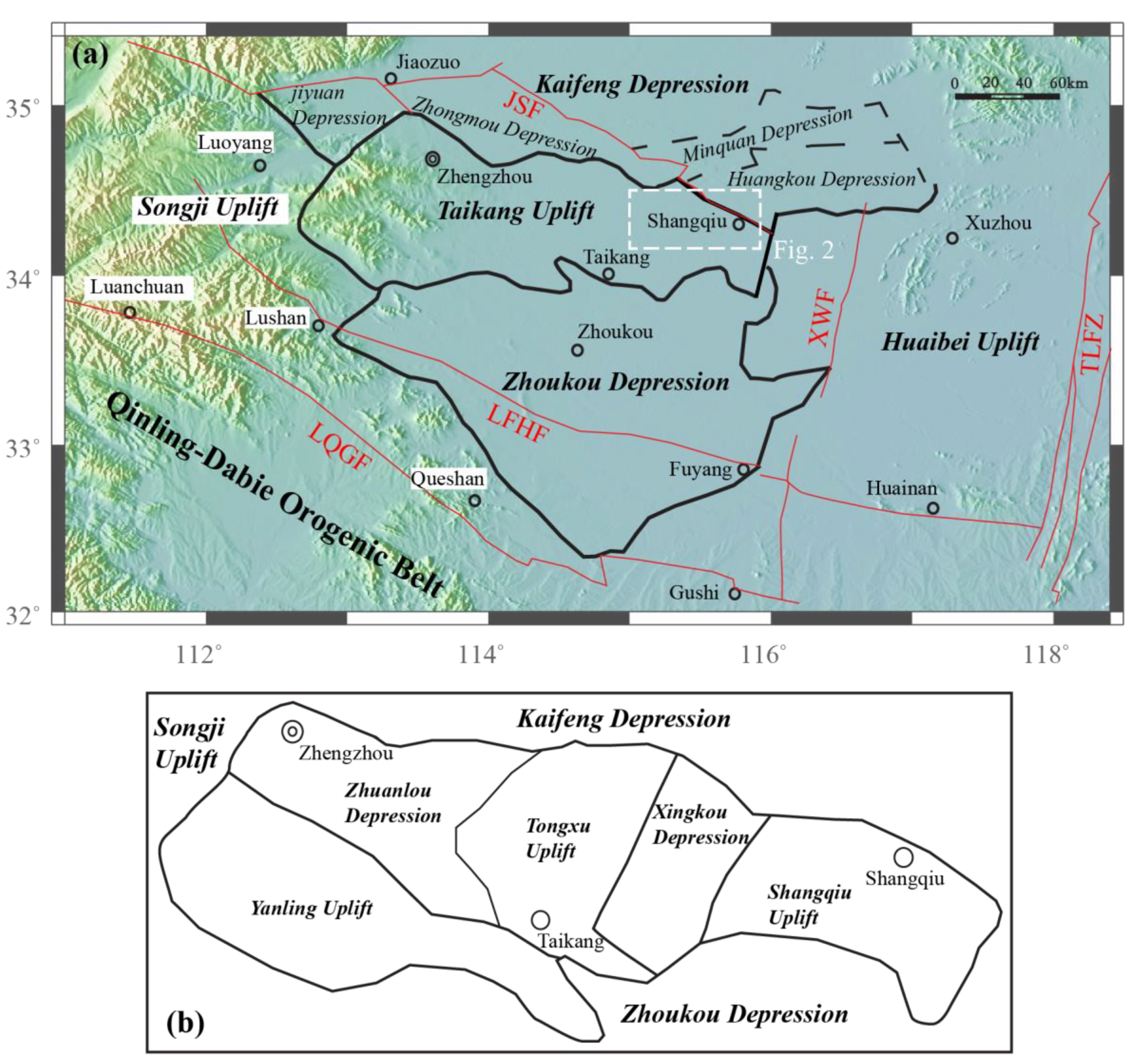
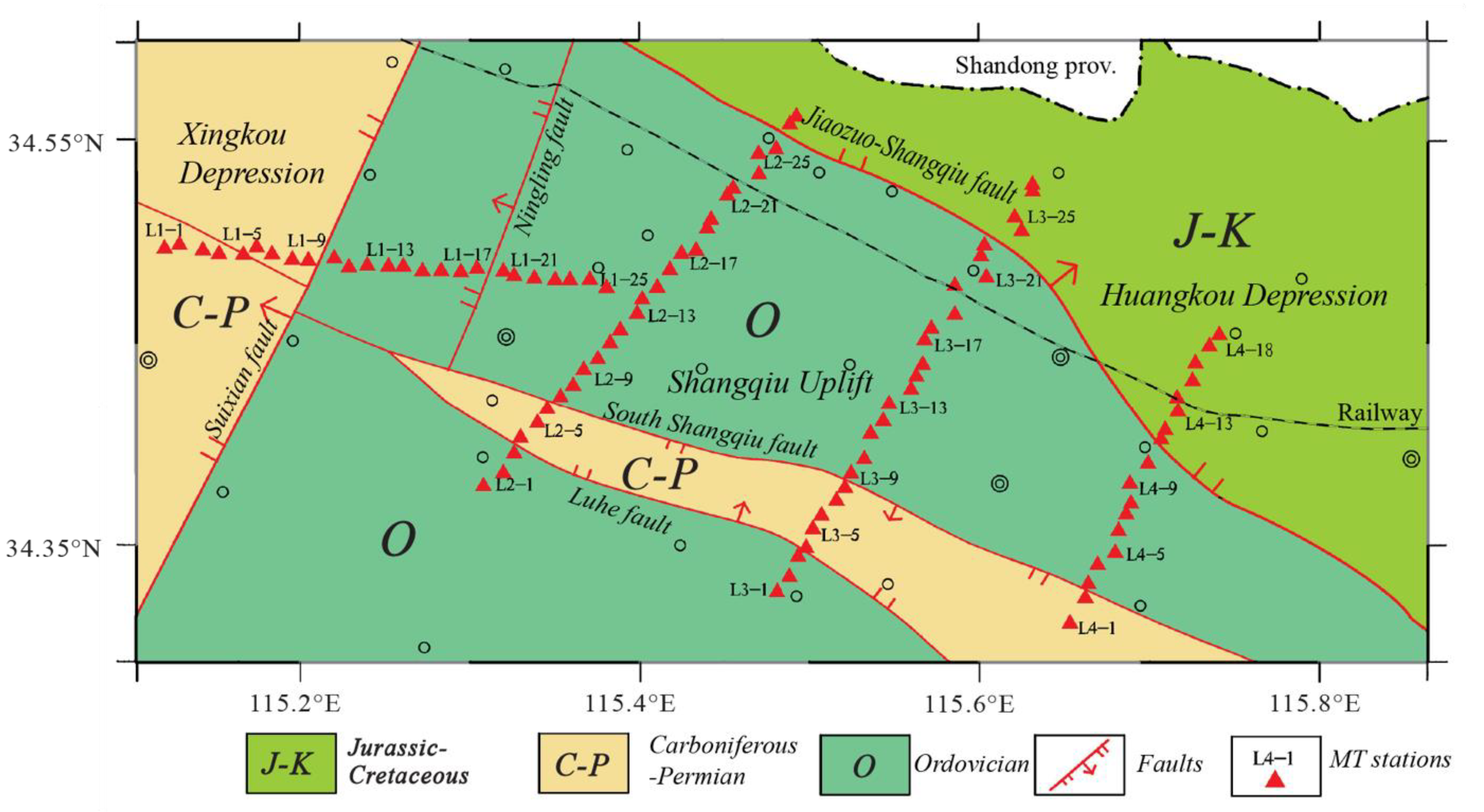
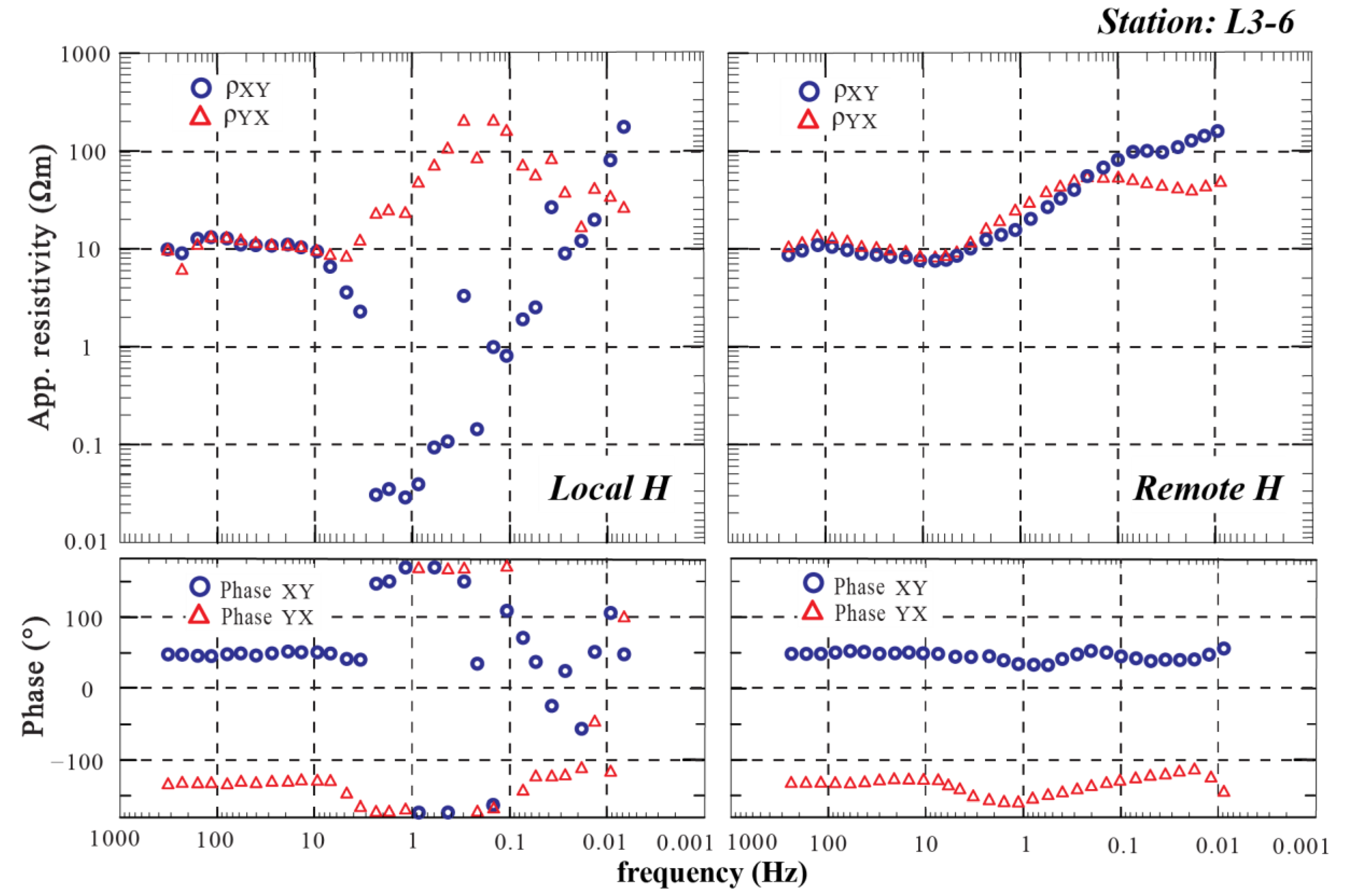
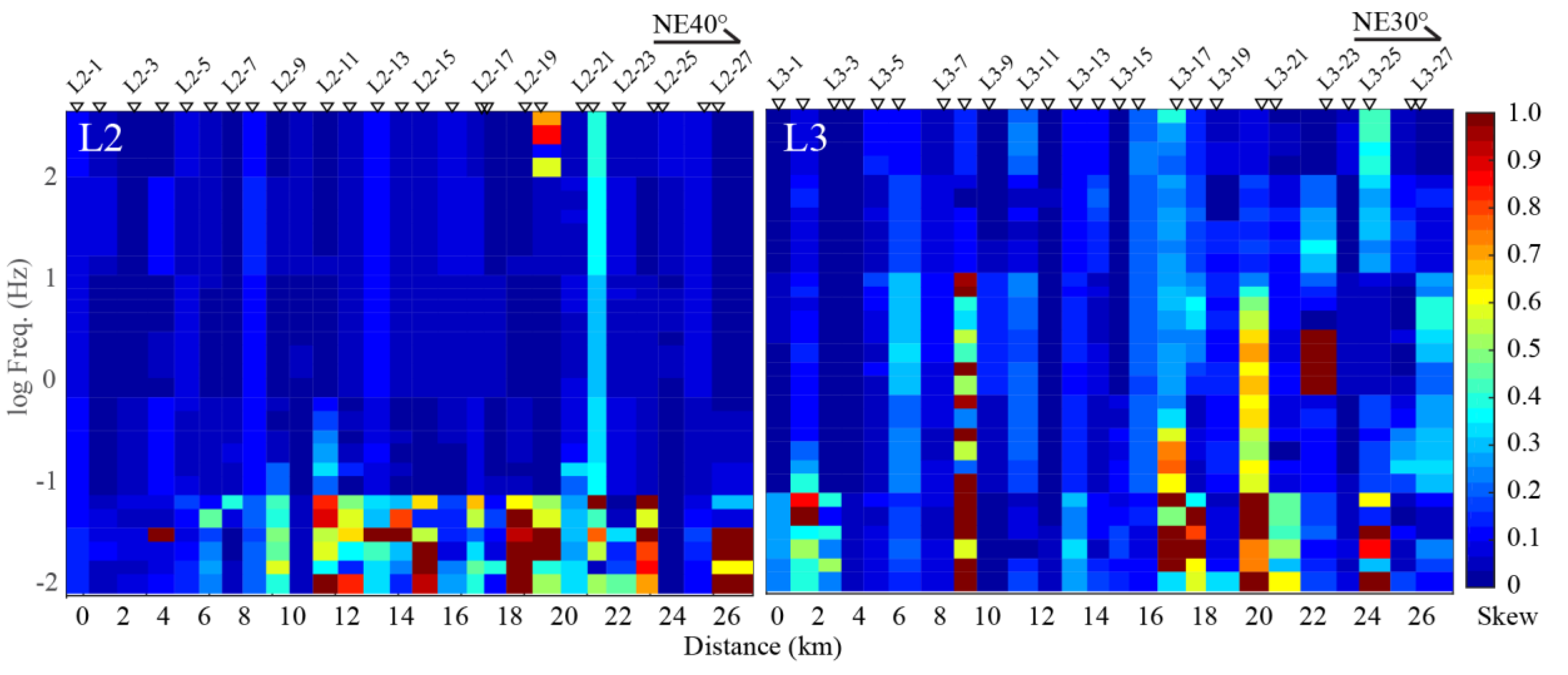

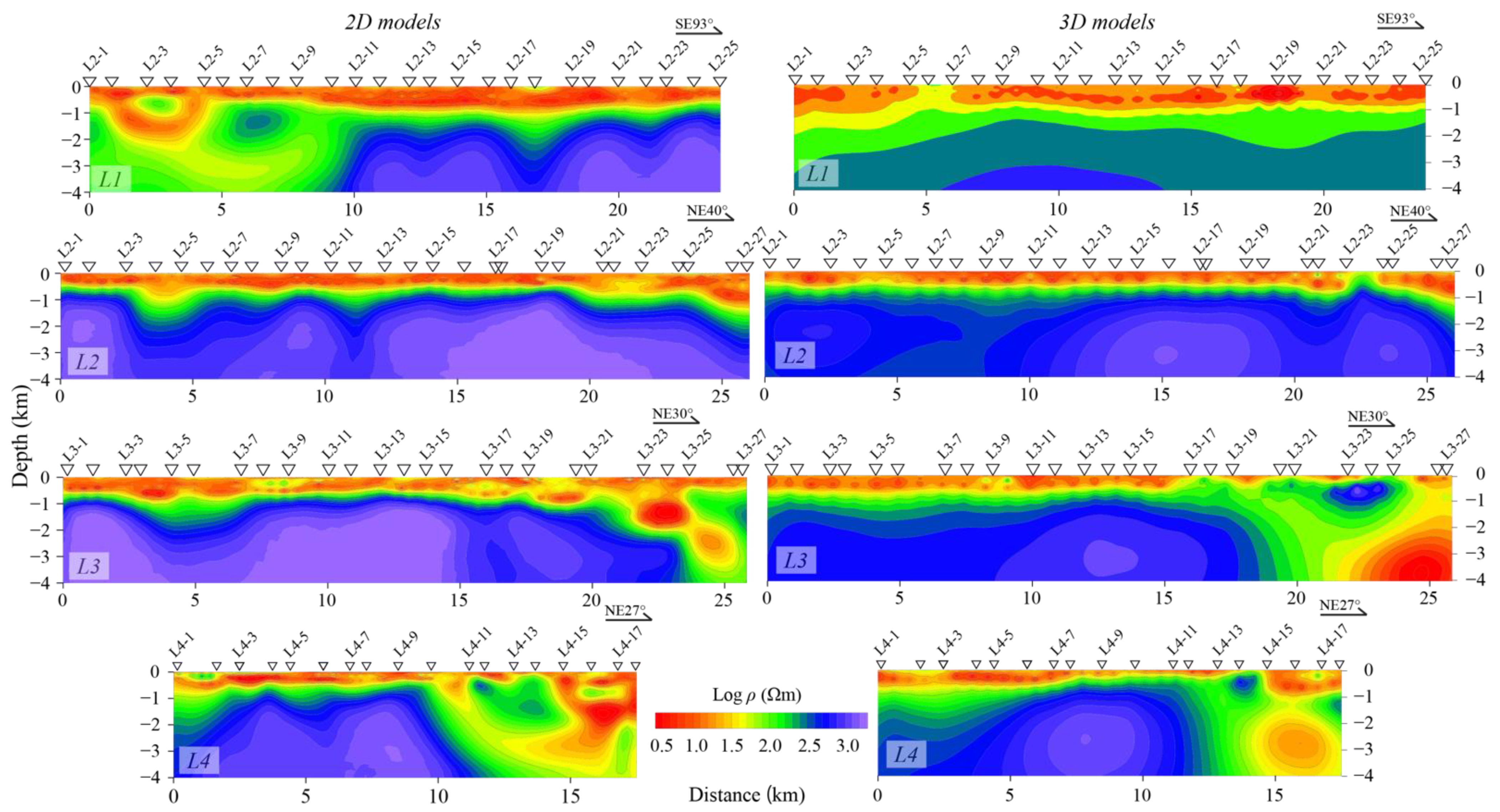
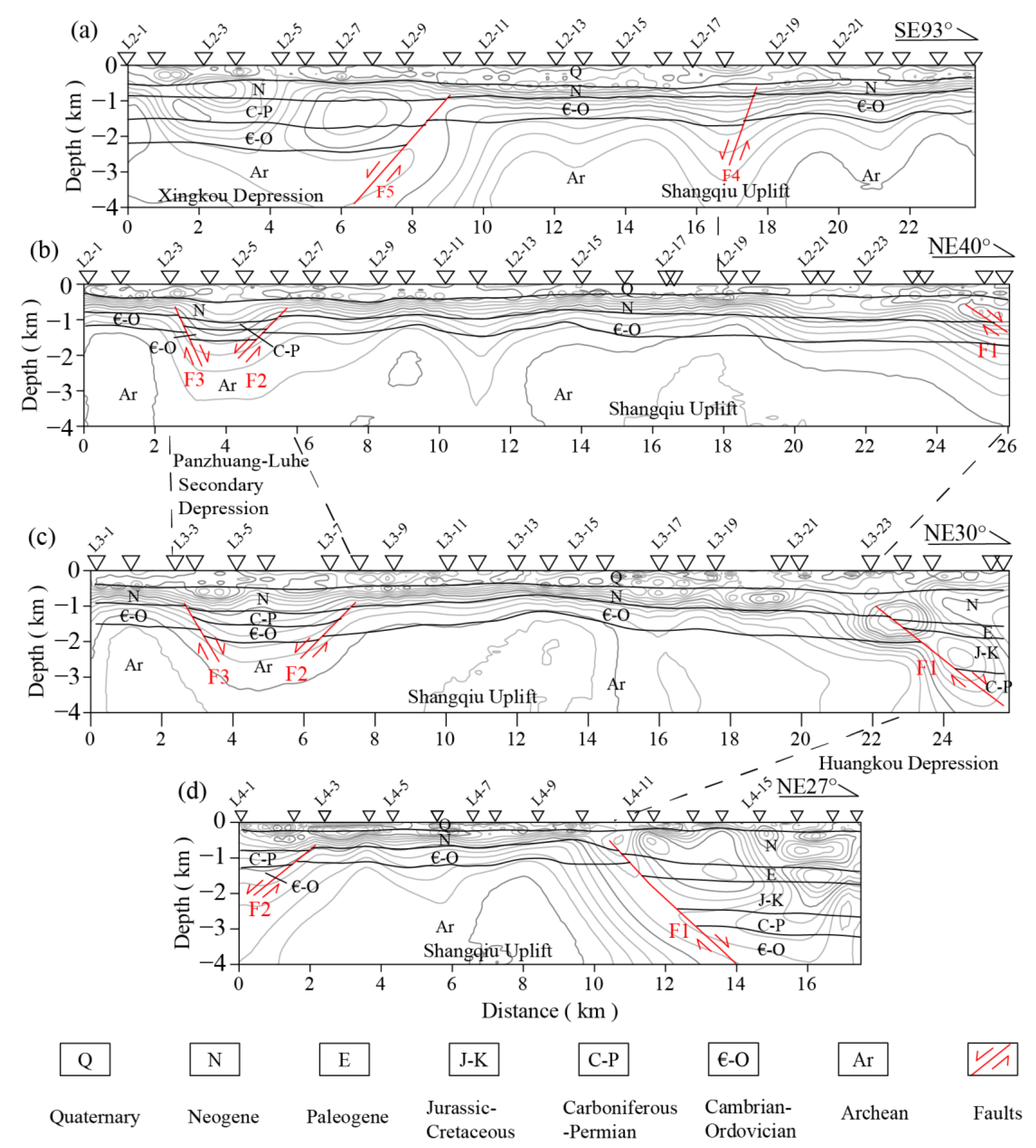
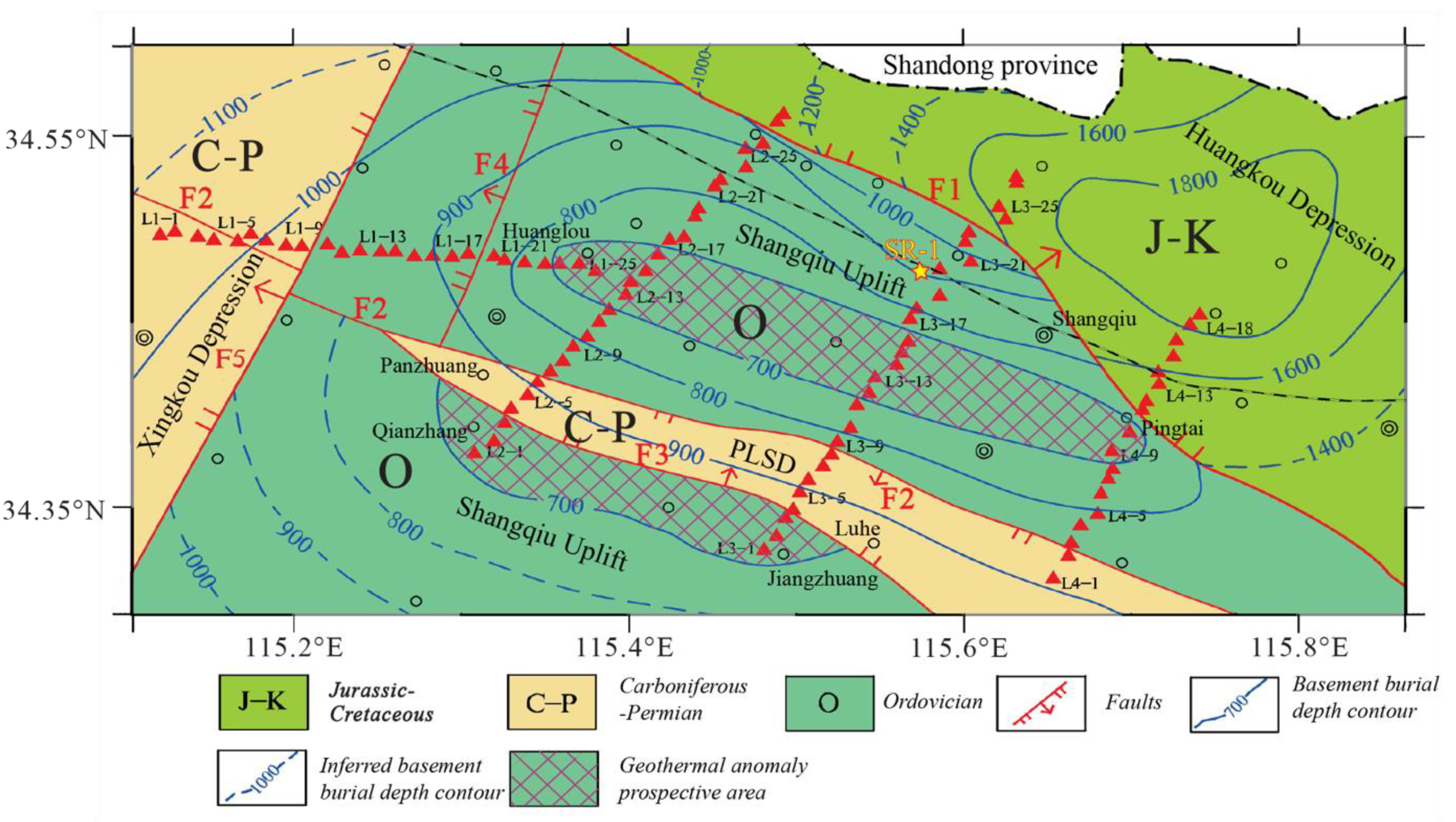
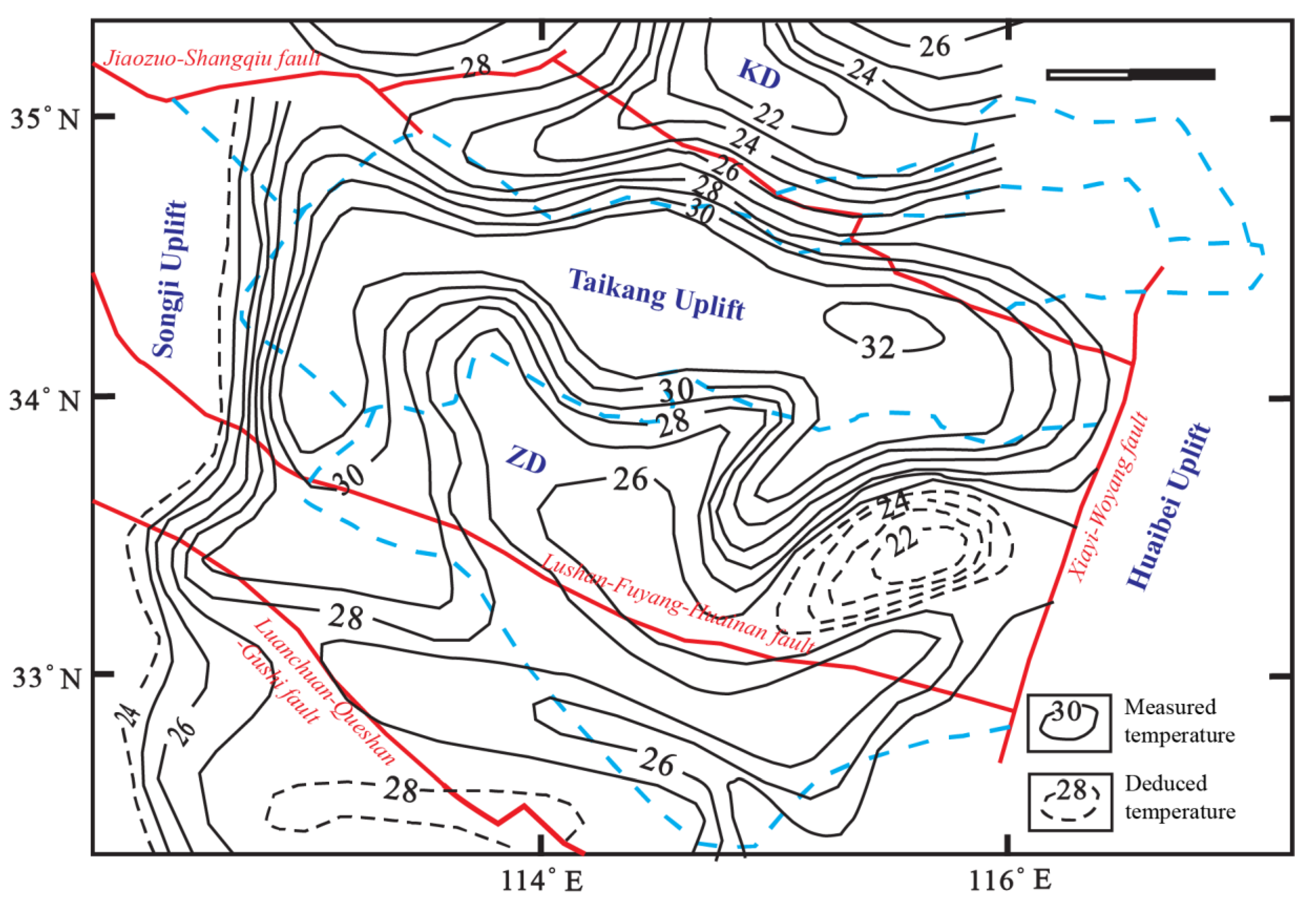
Publisher’s Note: MDPI stays neutral with regard to jurisdictional claims in published maps and institutional affiliations. |
© 2022 by the authors. Licensee MDPI, Basel, Switzerland. This article is an open access article distributed under the terms and conditions of the Creative Commons Attribution (CC BY) license (https://creativecommons.org/licenses/by/4.0/).
Share and Cite
Xu, B.; Zhu, H.; Liu, Z.; Shao, B.; Ye, G. Prospective Evaluation of Geothermal Resources in the Shangqiu Uplift of the Southern North China Basin with Magnetotelluric Detection. Minerals 2022, 12, 811. https://doi.org/10.3390/min12070811
Xu B, Zhu H, Liu Z, Shao B, Ye G. Prospective Evaluation of Geothermal Resources in the Shangqiu Uplift of the Southern North China Basin with Magnetotelluric Detection. Minerals. 2022; 12(7):811. https://doi.org/10.3390/min12070811
Chicago/Turabian StyleXu, Bowen, Huailiang Zhu, Zhilong Liu, Bingsong Shao, and Gaofeng Ye. 2022. "Prospective Evaluation of Geothermal Resources in the Shangqiu Uplift of the Southern North China Basin with Magnetotelluric Detection" Minerals 12, no. 7: 811. https://doi.org/10.3390/min12070811
APA StyleXu, B., Zhu, H., Liu, Z., Shao, B., & Ye, G. (2022). Prospective Evaluation of Geothermal Resources in the Shangqiu Uplift of the Southern North China Basin with Magnetotelluric Detection. Minerals, 12(7), 811. https://doi.org/10.3390/min12070811





